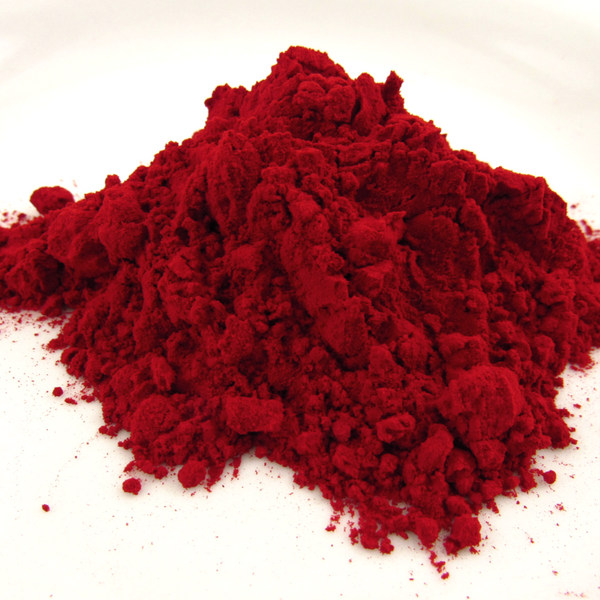[vc_row][vc_column][vc_column_text]
This week: You want a deep red and a dark blue and we deliver on how to do that.
Each week, we are emailed with questions from our natural dye community asking simple and complex questions that we thought might be worth sharing. Here are a handful from this week answered by natural dyer in chief, Kathy Hattori, Founder of Botanical Colors:
How much WOF (cellulose) could I expect to dye to a dark shade of red with 50g of cochineal extract?
Cochineal and cotton fiber are can be a tricky combination as the depth of shade may be much lighter than an equivalent percentage on wool or silk. We normally advise that 3% wof provides a rich shade when working with cochineal extract, but you can use as much as 6%. Be aware the color may be closer to a very dark fuchsia rather than a true red as cochineal has a very strong blue base. Before you splurge all your expensive cochineal, we recommend using a pure water source (some dyers use distilled water), and that the fabric is thoroughly scoured. Mordant processes that include tannin will influence the color toward crimson. Plan on having additional scoured and mordanted fibers to use up the exhaust on this dye bath. It will be very potent.
Also shop our cochineal bugs.
How do you know when to add more indigo?
The basic rule of thumb is that if you dip for 5 minutes and the shade that comes out of the vat is no darker than the previous dip then you should add more indigo to your vat. The simplest way to do this is to add more stock solution, or create another 1-2-3 stock solution and add that. Stir the vat well and wait for it to clear and reduce. We normally calculate 10% indigo on the wof for darkest shades, 5% for medium shades, and 1% for light shades.[/vc_column_text][/vc_column][/vc_row]

